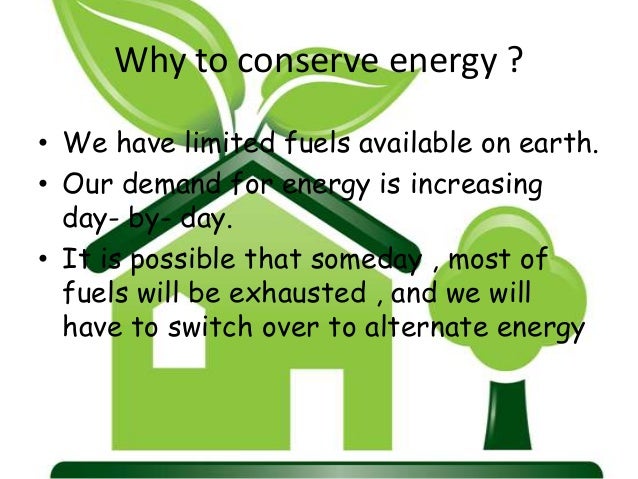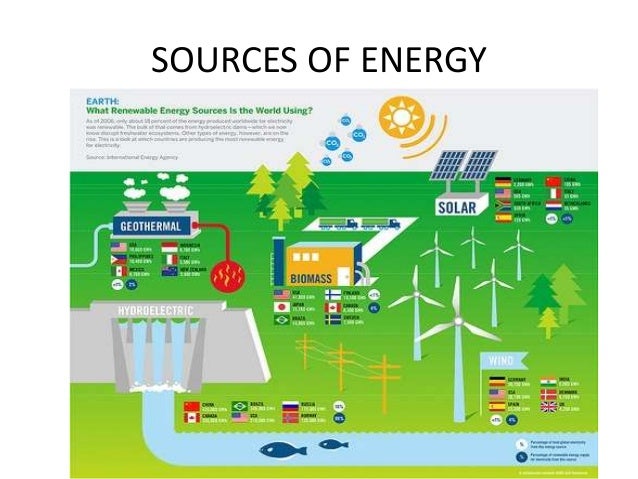Conserving Energy
Welcome back. At the end of the last video, I left you with a bit of a question. We had a situation where we had a 1 kilogram object.

This is the 1 kilogram object, which I've drawn neater in this video. That is 1 kilogram.
And we're on earth, and I need to mention that because gravity is different from planet to planet. But as I mentioned, I'm holding it. Let's say I'm holding it 10 meters above the ground. So this distance or this height is 10 meters. And we're assuming the acceleration of gravity, which we also write as just g, let's assume it's just 10 meters per second squared just for the simplicity of the math instead of the 9.8. So what we learned in the last video is that the potential energy in this situation, the potential energy, which equals m times g times h is equal to the mass is 1 kilogram times the acceleration of gravity, which is 10 meters per second squared. I'm not going to write the units down just to save space, although you should do this when you do it on your test.
And then the height is 10 meters. And the units, if you work them all out, it's in newton meters or joules and so it's equal to 100 joules. That's the potential energy when I'm holding it up there. And I asked you, well when I let go, what happens? Well the block obviously will start falling. And not only falling, it will start accelerating to the ground at 10 meters per second squared roughly. And right before it hits the ground- let me draw that in brown for ground- right before the object hits the ground or actually right when it hits the ground, what will be the potential energy of the object?

Well it has no height, right? Potential energy is mgh.
The mass and the acceleration of gravity stay the same, but the height is 0. So they're all multiplied by each other. So down here, the potential energy is going to be equal to 0. And I told you in the last video that we have the law of conservation of energy.
That energy is conserved. It cannot be created or destroyed. It can just be converted from one form to another.
But I'm just showing you, this object had 100 joules of energy or, in this case, gravitational potential energy. And down here, it has no energy. Or at least it has no gravitational potential energy, and that's the key.
That gravitational potential energy was converted into something else. And that something else it was converted into is kinetic energy. And in this case, since it has no potential energy, all of that previous potential energy, all of this 100 joules that it has up here is now going to be converted into kinetic energy. And we can use that information to figure out its velocity right before it hits the ground. So how do we do that? Well what's the formula for kinetic energy? And we solved it two videos ago, and hopefully it shouldn't be too much of a mystery to you.
It's something good to memorize, but it's also good to know how we got it and go back two videos if you forgot. So first we know that all the potential energy was converted into kinetic energy. We had 100 joules of potential energy, so we're still going to have 100 joules, but now all of it's going to be kinetic energy. And kinetic energy is 1/2 mv squared. So we know that 1/2 mv squared, or the kinetic energy, is now going to equal 100 joules. What's the mass?
The mass is 1. And we can solve for v now. 1/2 v squared equals 100 joules, and v squared is equal to 200. And then we get v is equal to square root of 200, which is something over 14. We can get the exact number. Let's see, 200 square root, 14.1 roughly. The velocity is going to be 14.1 meters per second squared downwards.
Right before the object touches the ground. Right before it touches the ground. And you might say, well Sal that's nice and everything.
We learned a little bit about energy. I could have solved that or hopefully you could have solved that problem just using your kinematics formula. So what's the whole point of introducing these concepts of energy? And I will now show you. So let's say they have the same 1 kilogram object up here and it's 10 meters in the air, but I'm going to change things a little bit.
Let me see if I can competently erase all of this. Nope, that's not what I wanted to do. OK, there you go. I'm trying my best to erase this, all of this stuff. So I have the same object. It's still 10 meters in the air and I'll write that in a second. And I'm just holding it there and I'm still going to drop it, but something interesting is going to happen.
Instead of it going straight down, it's actually going to drop on this ramp of ice. The ice has lumps on it. And then this is the bottom.
This is the ground down here. This is the ground. So what's going to happen this time? I'm still 10 meters in the air, so let me draw that. That's still 10 meters. I should switch colors just so not everything is ice. So that's still 10 meters, but instead of the object going straight down now, it's going to go down here and then start sliding, right?
It's going to go sliding along this hill. And then at this point it's going to be going really fast in the horizontal direction. And right now we don't know how fast. And just using our kinematics formula, this would have been a really tough formula. This would have been difficult.
I mean you could have attempted it and it actually would have taken calculus because the angle of the slope changes continuously. We don't even know the formula for the angle of the slope. You would have had to break it out into vectors. You would have to do all sorts of complicated things. This would have been a nearly impossible problem. But using energy, we can actually figure out what the velocity of this object is at this point.
And we use the same idea. Here we have 100 joules of potential energy. We just figured that out. Down here, what's the height above the ground?
Well the height is 0. So all the potential energy has disappeared. And just like in the previous situation, all of the potential energy is now converted into kinetic energy.
And so what is that kinetic energy going to equal? It's going to be equal to the initial potential energy.
So here the kinetic energy is equal to 100 joules. And that equals 1/2 mv squared, just like we just solved. And if you solve for v, the mass is 1 kilogram. So the velocity in the horizontal direction will be, if you solve for it, 14.1 meters per second. Instead of going straight down, now it's going to be going in the horizontal to the right. And the reason why I said it was ice is because I wanted this to be frictionless and I didn't want any energy lost to heat or anything like that. And you might say OK Sal, that's kind of interesting.
And you kind of got the same number for the velocity than if I just dropped the object straight down. And that's interesting. But what else can this do for me? And this is where it's really cool. Not only can I figure out the velocity when all of the potential energy has disappeared, but I can figure out the velocity of any point- and this is fascinating- along this slide. So let's say when the box is sliding down here, so let's say the box is at this point. It changes colors too as it falls.
So this is the 1 kilogram box, right? It falls and it slides down here. And let's say at this point it's height above the ground is 5 meters.
Conserving Energy For Kids
So what's its potential energy here? So let's just write something. All of the energy is conserved, right?
So the initial potential energy plus the initial kinetic energy is equal to the final potential energy plus the final kinetic energy. I'm just saying energy is conserved here. Up here, what's the initial total energy in the system? Well the potential energy is 100 and the kinetic energy is 0 because it's stationary.
I haven't dropped it. I haven't let go of it yet. It's just stationary. So the initial energy is going to be equal to 100 joules. That's cause this is 0 and this is 100. So the initial energy is 100 joules. At this point right here, what's the potential energy?
Well we're 5 meters up, so mass times gravity times height. Mass is 1, times gravity, 10 meters per second squared. Times height, times 5. So it's 50 joules.
That's our potential energy at this point. And then we must have some kinetic energy with the velocity going roughly in that direction.
Plus our kinetic energy at this point. And we know that no energy was destroyed. It's just converted. So we know the total energy still has to be 100 joules. Tomates 9.0 purchase for mac. So essentially what happened, and if we solve for this- it's very easy, subtract 50 from both sides- we know that the kinetic energy is now also going to be equal to 50 joules. So what happened?
Halfway down, essentially half of the potential energy got converted to kinetic energy. And we can use this information that the kinetic energy is 50 joules to figure out the velocity at this point. 1/2 mv squared is equal to 50. The mass is 1.
Multiply both sides by 2. You get v squared is equal to 100. The velocity is 10 meters per second along this crazy, icy slide. And that is something that I would have challenged you to solve using traditional kinematics formulas, especially considering that we don't know really much about the surface of this slide.
And even if we did, that would have been a million times harder than just using the law of conservation of energy and realizing that at this point, half the potential energy is now kinetic energy and it's going along the direction of the slide. I will see you in the next video.
It's no surprise that energy costs money, yet some people greet their bills each month with shock when they see precisely how much their power consumption is costing them. According to the U.S. Department of Energy (DOE), the average family spends some $1,600 per year on utility bills alone. Anything you can do to.
Let's take a look at 10 painless ways to. Use Your Thermostat Turning up the temperature during the summer and turning it down during the winter are great ways of putting your thermostat to work for your wallet. The DOE recommends setting the air conditioner to 74 degrees and the furnace to 68 to keep your house comfortable while reducing your energy costs and decreasing the demand on the energy grid. A programmable thermostat lets you make the house hotter or cooler during periods when you aren't home. This reduces the temperature difference between the exterior and interior of your house, which in turn reduces energy loss. If you don't have a programmable thermostat, you can manually adjust your existing unit. Ceiling Fans If you have ceiling fans in your house, turn them on and use them properly.
According to Energy Star, a voluntary labeling program sponsored by the DOE and the U.S. Ceiling fans should be set to spin counter-clockwise in the summer, which pulls hot air up to the ceiling and away from the living space. In the winter, reverse the setting so the fans blow the hot air down. Energy Star Appliances Energy Star also identifies energy-efficient appliances, including washers, dryers, refrigerators, freezers, dishwashers, dehumidifiers, room air conditioners, computers, and more. When shopping for new appliances, look for the Energy Star label, and rest assured that the items you are purchasing will.
Of course, you wouldn't want to increase the use of these items just because they save energy. This is similar to the potential moral hazard of low-fat food: consuming more defeats the purpose. Home Electronics Stereos, DVD players, televisions, kitchen appliances, and any other plugged-in appliances draw a small amount of power even when turned off. Per the BBC, Large LCD and plasma televisions consume up to 400 watts of energy when in use and about four watts when not in use. Use the surge suppressor to turn them completely off when not in use, or unplug these items until you really need them. Energy-Efficient Light Bulbs A quick and easy way to reduce your energy use is to replace existing incandescent bulbs with energy-efficient compact fluorescent ones.
According to General Electric (NYSE:), compact fluorescent bulbs 'use two-thirds less energy than standard incandescent light bulbs, and last up to 10 times longer.' GE reports that using a 13-watt compact fluorescent bulb in place of a 60-watt incandescent one will result in a $30 savings in energy costs over the life of the bulb. Regardless of the bulbs you use, turn them off when you leave the room. For laundry rooms, garages, basements, and other little-used areas, consider the installation of timers that automatically turn off the lights after a preset amount of time – just in case you forget to shut them off. Conserve water are available for your shower, faucets and toilets. In addition to installing these items, be sure to replace faucets that drip, fix toilets that leak, and turn off the spigot when brushing your teeth or scrubbing dishes. Every drop of water you save contributes to the conservation of this valuable resource – and we're talking water here, not just money.
Seal and Insulate A well-insulated house reduces the amount of money you will spend on heating and cooling. Start by checking your attic. If your attic is unfinished, you shouldn't be able to see the floor joists.
If you can see them, add more insulation. Also, be sure to fill in and seal any holes in your exterior walls, such as where pipes come into the house, and around windows and doors.
Wrap your boiler and exposed pipes with insulation to help them maintain the proper temperature. Change/Empty Your Filters Change the filter on your furnace on a frequent basis. Many furnace manufacturers recommend doing it quarterly or even monthly to keep the unit operating at peak efficiency. Similarly, empty the lint filter in your dryer after every use. Even a small amount of lint reduces energy efficiency.
Close the Doors and More Don't waste energy. Close the doors on your refrigerator and house as quickly as possible. Keep fireplace dampers shut when not in use. Close the curtains to cover your windows at night. All of these little efforts help to conserve energy by preventing heat loss. Use Your Surroundings Strategically placed trees can help reduce your heating and cooling costs.

During the summer, trees provide shade. During the winter, trees provide a windbreak. Positioning large deciduous trees in the right places can reduce cooling costs by up to 25%, according to the DOE.
Conserving Energy In Schools
These deciduous trees should be planted on the south and west sides of your home, and strategically positioned to shade hard surfaces, including driveways and patios, to maximize their impact. Because they lose their leaves in winter, they allow the sun to warm your house. Evergreen trees planted on the north side of your home will help to shield the house from cold winds in every season. Small Steps Lead to Big Savings.
Do your part to make energy conservation a habit; it's a move with positive implications for both the environment and your wallet. For more on going green, check out our.